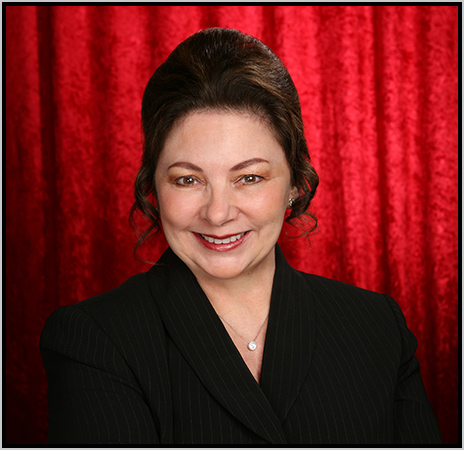
What Are Women Actually Thinking?
By Dr. Lita-Luise Chappell, D.H.S. (Doctor of Human Sexuality)
What are heterosexual women actually thinking when they see a handsome man walking down the street? How often do women think about sex? What are they thinking when they view same sex couples? What are they thinking when they see a heterosexual couple having sex? What do women think about facial hair on men? What are women really thinking of when they are contemplating intercourse? And what do women think makes a happy marriage?
Wouldn’t the male of the species like to know! Well, it turns out other women want to know, too. In a study conducted at Northwestern University in Ontario, Canada (Chivers, Rieger, Latty, and Bailey, 2004), 232 volunteer women were shown films of mixed sexual couplings, while measuring the volunteer’s subjective feelings as well as their genital engorgement. Heterosexual women experienced genital arousal while watching heterosexual couples having sex. No surprise there. When watching same-sex couples of both sexes, the heterosexual women did not feel as though they were turned on, but the monitors registered a positive genital engorgement. So what are women thinking while their bodies are reacting? Obviously, differently than was thought, even by them.
One of the largest sex studies in history was conducted by Alfred C. Kinsey on the sexuality of 5,940 women (Kinsey, 1953). Although this historical research concentrated on the behavior of women rather than on what they thought, actions are often a clear indication of the thought processes that women go through before they act. How early did women think they had engaged in sexual activity that resulted in orgasm? By the age of ten 8% of girls had climaxed, by age thirteen 14% had climaxed, and by age eighteen most had experienced climaxes. Obviously, thoughts of sexuality begin very early, with a high occurrence being from sex dreams and masturbation. As women mature they not only think about sex less than men, women take longer to achieve arousal. Women are more sexually aroused by reading a sexy book rather than by seeing sexuality. Women are by nature much less sexually responsive to psychological factors than are men. When asked what they thought about losing their virginity, four out of five women had little to no regrets about their sexual activity.
In her book, The Female Brain, Louann Brizendine, states that men think about sex every 52 seconds, but women may only think about sex once a day. However, she says that in place of thinking about sex, women are thinking more about their sex appeal. What is the reason for this difference? Hormones. A woman’s hormones influence her values, desires and drives. Women even think faster and say more; they speak on an average 250 words per minute versus men’s 125 words a minute. A woman uses approximately 20,000 words per day, while a man uses only 7,000. Words or no words, the female brain seems to be more actively producing thought patterns.
A study at Northumbria University was carried out to determine the attractiveness of men’s facial hair and what women thought. Dr. Nick Neave and Kerry Shields (2008) showed 76 women pictures of men who wore five different facial looks: clean-shaven, light stubble, heavy stubble, light beard and full beard. Men with beards were thought of as the most dominant. The least attractive in the women’s minds were those men who were clean-shaven, ranking them low in masculinity, dominance, aggression, and social maturity. The most attractive and most ideal romantic partner sports stubble, showing maturity, but is not too masculine.
One study conducted by Weight Watchers, asked 932 British women what they spent most of their time thinking about. Although 58% did think about sex about ten times per day, 70% admitted to having fantasies about food. At least half of all women worry about their body image, with 53% thinking about food at least ten times per day. When it comes to thinking about food or sex, women are likely to focus on something more readily available, like chocolate.
When it comes to what women are thinking about why they want to have sex, one tends to think of the usual reasons: to experience pleasure, to relieve sexual tension or to produce offspring. You may be surprised to find out that there are a lot more reasons than ever expected.
Cindy Meston and David Buss (2005) asked almost 900 women, ages 17 to 52 to list what they thought were the reasons why people engage in sexual intercourse. What women think had been previously studied (Leigh, 1989) adding a few more reasons to the list: to express emotional closeness, because a partner wants it, to please a partner, and to make a conquest. Other surveys (Hill & Preston, 1996), (Buss & Schmitt, 1993), and (Gangestad & Simpson, 2000) added more responses to the list: to feel valued and to express that value, to nurture one’s partner, for enhanced feelings of personal power, to experience their partner’s power, desire to experience sexual variety, and seeking to improve one’s sexual skills. And these are just the responses from the non-attached females.
Partnered women had a whole additional list of what they thought were the reasons for having sex in their relationships. Sex may be used as a reward, as a bartering tool, or as a punishment. There were some women who said they thought of sex for intensifying a relationship, to escalate a relationship, or to make longer a short-term relationship. There are also those personal feelings that women receive from gaining emotional closeness for affection, love, acceptance, bonding, and tolerance. Some women think of sex as a way to guard their relationship from the attention of other women. They also think of sex to gain favors, special privileges, a better job, for status, or prestige. Women are definitely more emotionally motivated than men.
Meston and Buss finally came up with an amazing 142 different responses of what women and men were thinking about why they want sex. Not so surprising was that twenty out of the top twenty-five were thought of equally the same by men. When all of the data was in, there were basically four main factors and fifteen sub-factors that encompassed the full range of responses: Physical reasons (stress reducing, pleasure, physical desirability, and experience seeking), goal attainment (resources, social status, revenge and utilitarian), emotional reasons (love, commitment and expression) and for insecurity (self-esteem boost, duty, pressure and mate guarding). So what was the number one thing on a woman’s mind when she was thinking of having sex? Apparently women, like men, are not really thinking that much, because the number one reason why people have sex is simple attraction.
When women were asked what they thought would make for a happy marriage, Gottman, Coan & Carrerre, (1998) reported that women were more likely to have marital happiness when they shared similar attitudes, values, and beliefs with their partner. Once married however, personality factors become more important. Women also think that lovers who are more skilled at problem solving and displaying positive feelings and good will, tend to create better partnerships. Partners that are gentle, soothing, and respond neutrally to negative emotions were thought of as offering a more stable relationship. The best recipe for a satisfying relationship, they thought, was good old clear communication.
What are women actually thinking? It sounds like it greatly depends upon whether the woman is single or married, whether she wants pleasure or not, whether she wants something in exchange or not, whether she has an emotional need, or seeks security. Whether women think about sex only once a day or ten times a day, thoughts are more likely to turn toward sexuality only if there is attraction present. If attraction is not present, there is always that tall, dark, and handsome chocolate bar just waiting to be laid bare and enjoyed.
Brizendine, L. (2007). “The female brain.” New York: Broadway Books. Archives of Sexual Behavior, 36:477–507.
Buss, D. M., & Schmitt, D. P. (1993). “Sexual strategies theory: An evolutionary perspective on human mating.” Psychological Review, 100, 204–232.
Chivers, M. and J. Michael Bailey. (2005). “A sex difference in features that elicit genital response,” Biological Psychology, 70, 115-120.
Michael Bailey, & Chivers, Meredith, & Latty, Elizabeth and Rieger, Gerulf. (2004). “A sex difference in the specificity of sexual arousal,” Psychological Science, Vol.15, No. 11, 736-744
Gangestad, S. W., & Simpson, J. A. (2000). “The evolution of human mating: Trade-offs and strategic pluralism.” Behavioral and Brain Sciences, 23, 675–687.
Gottman, J. M., Coan, J., Carrerre, S., Swanson, C. (1998). “Predicting marital happiness and stability from newlywed interactions.” Journal of Marriage and the Family, 5-22.
Hill, C. A., & Preston, L. K. (1996). “Individual differences in the experience of sexual motivation: Theory and measurement of dispositional sexual motives.” Journal of Sex Research, 33, 27–45.
Kinsey, A.C, Pomeroy W.B., C.E. Martin, & Gebhard P.H. (1953) Sexual behavior in the human female. Philadelphia, PA: W.B. Saunders.
Leigh, B. C. (1989). “Reasons for having and avoiding sex: Gender, sexual orientation, and relationship to sexual behavior.” Journal of Sex Research, 26, 199–209.M. (2001).
Meston, C. and Buss, D. (2007) Why humans have sex. New York: Springer Publishing.
Neave, N. and Shields, K., (2008) The effects of facial hair manipulation on female perceptions of attractiveness, masculinity, and dominance in male faces. Newcastle upon Tyne: Elsevier Ltd.
 The official website of Lita-Luise Chappell, writer on sex, magic, food, distant lands, and everyday life with articles, poetry, novels, travelogues, rituals, cookbooks, and short-stories.
The official website of Lita-Luise Chappell, writer on sex, magic, food, distant lands, and everyday life with articles, poetry, novels, travelogues, rituals, cookbooks, and short-stories.
